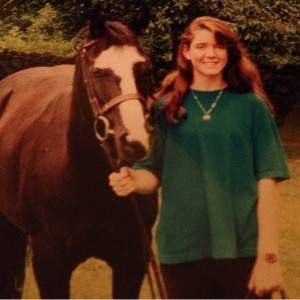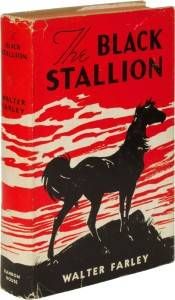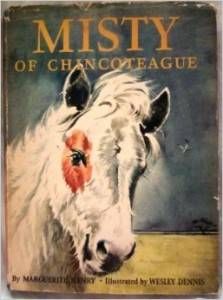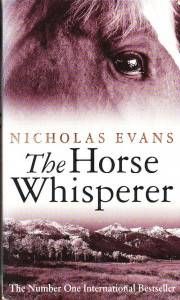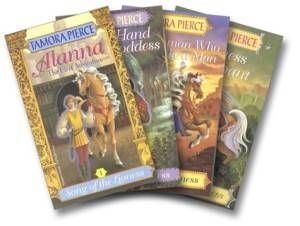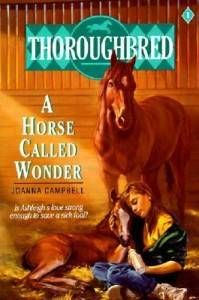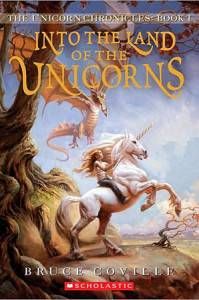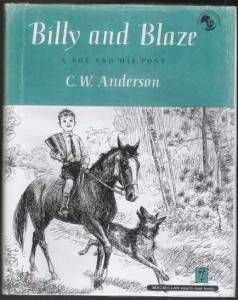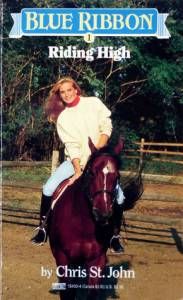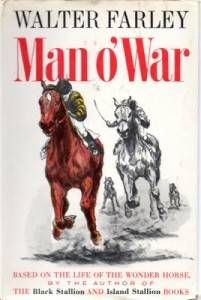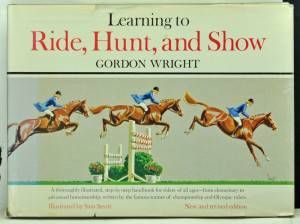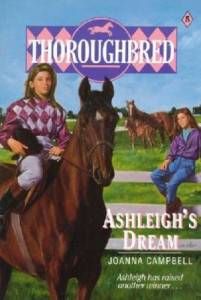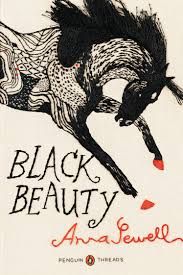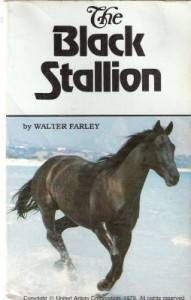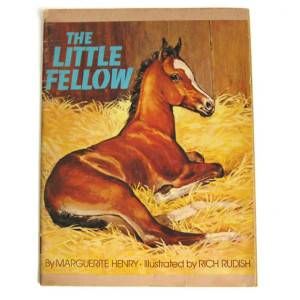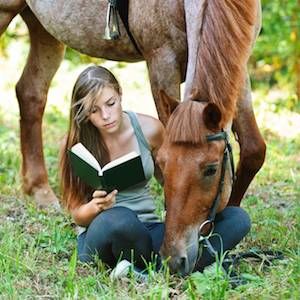
15 Equestrians Pick the Best Books for Young Horse Lovers
While we at the Riot take some time off to rest and catch up on our reading, we’re re-running some of our favorite posts from the last several months. Enjoy our highlight reel, and we’ll be back with new stuff on Monday, January 11th.
This post originally ran October 6, 2015.
_________________________
When I was 12 I cared of little else but horses. Need proof?
Does this look at all like a human being concerned with things like, say, eyebrow maintenance, or balancing the visual proportions of that outfit with her oversized horse pendant necklace?
When I wasn’t at the barn, I was home reading, which is a common intersection of interests; the typical venn diagram of Pony Girls and Book Girls approaches a near-perfect circle. Before leaving for riding camp each summer I would beg my mom to buy any new Saddle Club book the day it released and mail it to me, which quickly made me a queen among my jodhpur-clad, pigtailed peers. Within the riding community, The Saddle Club has Babysitters Club-level appeal; if pressed, I could likely still name the first fifteen titles in the series in chronological order. Hell, I could probably draw you a family tree for each of the fictional horses stabled at Pine Hollow.
I polled some (now adult) Pony Girls on what book they would give to a young horse lover today and, judging from the immediacy and intensity of each of the responses, it’s clear that these are keepers:
Project Director Chandra Reilly on The Black Stallion
A few years ago, my neighborhood bar decided to start showing simulcast horse racing. It was a strange world of numbers: position numbers, odds, split times, weight checks, and exotic combination bets. The math geek in me ate it up (and since I don’t actually gamble, it was an easy way to amuse myself without going broke.) After a while, in addition to the total nerdery, there was another attachment happening, a memory that was tugging my eyes up to the screen every time the horses ran. Weird background knowledge started creeping out of long unused parts of my brain. How did I know those things on their eyes were called blinkers? Why did the rhythm of it all seem familiar? Why did the phrase “riding crop” even exist in my vocabulary and why did I feel some strange empathetic connection to the jockeys? At some point I realized: everything I know about horse racing I learned from the Black Stallion series.
This probably sounds really stupid to anyone who ACTUALLY knows anything about horse racing. Clearly reading fictional accounts of a young man and a washed up jockey training an unbroken horse and his many relations to be champion race horses does not a racing expert make. Still, every time the horses would come out of the last turn, I would think about the moral dilemma of the series’ young jockey: To use the crop? To not use the crop? Every time a horse would spook at the starting gate, I’d think about the time the Black Stallion refused to race. Every time the camera would zoom in on the winner close enough to see frothy sweat built up on their back, I would think about that time one of the Black Stallion horses was put away wet and got pneumonia.
It has been years (probably 25 years?) since I read these books and the details are extremely hazy. But somehow certain turns of phrase and images still stick. So now I sit here, thumbing through the racing program, googling jockey records, assessing the horses during the parade, pretending I know something about this beautiful sport. All because Walter Farley shared his enduring wisdom with me back when I was young enough to believe I too could rescue a thoroughbred from a shipwreck and train him to be the greatest racehorse there ever was.
Chandra Reilly is a Construction Project Director in Phoenix who is lucky enough to have been befriended by a lot of fellow book needs and equine enthusiasts.
Author Jennifer E Smith on Misty of Chincoteague
All these years later, I still have it on my shelf: the same battered copy of Misty of Chincoteague that I first read as a kid. Every so often, I pull it down and leaf through the yellowed pages, and I’m suddenly nine-years-old again, horse-crazy and drunk on books, awestruck by the story of this coastal island and ragingly jealous of Paul and Maureen Beebe, who were lucky enough to have a pony like Misty.
When I first found out the book was based on a true story, it was like I’d been told Narnia was a real place. Somewhere on the east coast, there was an actual island populated by wild ponies, and once a year, just like in the book, they were rounded up to swim the channel, and then the foals were auctioned off, sometimes even to kids like me.
I wanted in.
My best friend and I went into overdrive. We put together a proposal called The Pony Project, which suggested our parents might let us travel to Chincoteague for Pony Penning Day and bid on a horse of our own. (“Personally, we think this would be a great bargain,” we wrote. “It would also be our birthday and Christmas presents.”)
They didn’t bite, of course. As a consolation prize, our dads took us on a trail ride, but it wasn’t the same. We wanted wild ponies. We wanted salt air and islands. We wanted Misty. But there was nothing to do except move on to other books in the series and keep dreaming of Chincoteague from afar.
A few years ago, we finally made it there, and it was everything I’d hoped it would be. We stood on the edge of the water and watched the horses swim across to the island, watched them later trot through the town, a damp and high-strung herd, watched the fast-talking auctioneer dole out ponies to lucky winners. There were a few that looked just like Misty. I had to promise my friend not to let me bid on one. (“I don’t think it would fit in your studio,” she said, sensibly.)
Still, it was like a piece of magic. It was like stepping into a page from your childhood. It was like watching all your nine-year-old dreams come to life.
It’s not often that stories stay with you as long as this one has with me. But decades later, I find I’m still dreaming of wild ponies. And I’m still re-reading the book.
Jennifer E Smith (@JenESmith) is the author of several YA novels including The Statistical Probability of Love at First Sight, This is What Happy Looks Like, and the forthcoming Hello, Goodbye and Everything In Between.
Veterinarian Alanna Chesney on The Horse Whisperer
When I read The Horse Whisperer, I realized that horses and horse stories weren’t just for little kids. As a teenager, I loved that I could read a grown up book (with some grown up content!) that still focused on my first love, horses. I could discuss the book with my adult relatives who were just as interested as I was. It’s a horsey book that isn’t all about winning ribbons or impressing boys (by winning ribbons… since obviously that is what impresses boys). I recommend it to any older teen who loves horses and stories about horses but is ready for a more mature read.
Alanna Chesney is a graduate of The College of William & Mary and The Cornell University College of Veterinary Medicine. A practicing small animal vet, she lives in Manhattan with her family.
Book Blogger/ Bookseller Tirzah Price on The Song of the Lioness Quartet
When I think back on the fantasy series I adored above all else when I was a kid, three very specific images come to mind: a girl with red hair and purple eyes, a very sassy magical cat, and the best mare in the entire world–Moonlight. The Song of the Lioness Quartet by Tamora Pierce is about a Lady Knight, Alanna of Tortall, who almost always feels alone in her world. In the first book, she disguises herself as a boy to become a knight, and even when the truth about her gender is finally halfway through the series and she is is made full knight, she’s often rejected and shunned.
Alanna purchases her first horse about halfway through the first novel–a golden mare with a white mane and tail who is “the most wonderful thing” Alanna has ever seen. I was not immune to Moonlight’s charms, either. Moonlight has a personality that perfectly complements my beloved heroine’s, but more than that she sticks with Alanna through everything–every trial and victory, and through every exile, battle, and quest. Moonlight is the one friend that never leaves Alanna throughout the course of the series, and she becomes an essential aspect of the Lioness’s image and legend. In short, she’s the kind of horse we all dream about, especially those of us who are riders and horse lovers. “We’re going to go a long way, you and I,” Alanna promises Moonlight when they first meet. And do they ever! Their journey is a delight to read and re-read.
Trizah Price is the Children’s Specialist at indie bookstore Great Lakes Book & Supply. She also answer to Professional Book Enabler.
Author Jessica Burkhart on The Thoroughbred Series
There isn’t a shortage of amazing horse books to recommend to young readers who share a love of the big, beautiful creatures. However, there is a series, or a book to be more specific, that encouraged me to write about horses and it is a story I’ll never forget.
Ashleigh’s Dream published in spring 1993 as the fifth book in Joanna Campbell’s Thoroughbred series. I was in second grade and had devoured every horse book on the planet, when my teacher, Mrs. Fentress, gave me a copy of this book. She knew about my horse obsession and love of riding. She was also aware that I was becoming closer and closer to having my passion taken away due to a diagnosis of severe scoliosis and the growing likeliness that I would need back surgery and never be able to ride again.
Inside the book, she encouraged me to lose myself in Campbell’s world and to be like Ashleigh Griffin—Campbell’s fiery young protagonist—who never gives up on her dream.
I don’t think I looked up from the novel from the moment I started until I finished it. I remember immediately begging my parents to take me to the local book store where I bought the first four books in the series.
As my place in Horse World slipped in reality, I got to live a fantasy of riding and training Thoroughbred’s through Ashleigh’s eyes. Pretending to chase Ashleigh’s dream to become a jockey in a male dominated sport prepared me to fight for my own goal later when I wanted to publish my first book. Thoroughbred taught me that I didn’t have to be in the saddle to still enjoy horses. Now, at 28-years old, I still reread the entire series at least once every couple of years.
Once you read Thoroughbred, the books are in your blood. Just like horses.
Jessica Burkhart (@JessicaBurkhart) is the author of the Canterwood Crest series (editor note: Canterwood Crest is an exceptional series option for your young horse lover. I read all of them -Cristin). Visit her at https://www.jessicaburkhartblog.com.
Marketing Manager Rachel Stark on Into The Land of the Unicorns
While most of my fourth grade class was playing kickball and jumping rope on the playground, I spent most of my recesses roping my friends into increasingly elaborate adventures involving imaginary unicorns, dragons, and a world called Luster. Blame it on Bruce Coville—his Unicorn Chronicles caught my eye in a Scholastic Book Club catalog, and it was all over from there.
Like a lot of horse-obsessed kids, I was also pretty partial to unicorns, and in Into the Land of the Unicorns I encountered the most exciting, fully developed unicorn world I could have imagined. I was fascinated by Cara’s connection to the unicorns of Luster, who communicate with her in colors, images, and emotions, and I became terribly attached to the menagerie of fantastical creatures that befriend Cara in Luster. More than anything, I loved—and still love—that the Unicorn Chronicles gave a smart, strong, and empathetic girl a lot like me the chance to lead her own adventure.
Twitter Jockey Rachel Stark (@syntactics) works in children’s book publishing in New York.
Author Alison Hart on Billy & Blaze
I was always horse-crazy, carrying around my stuffed, bedraggled pony everywhere, but then I began to read, and I discovered a new form of horse craziness. The Billy and Blaze series fueled my desire to have a true companion like Blaze who would accompany me on adventures. Billy and Blaze not only stoked my love of horses, but it taught me to read. I devoured every book in the series, and so was understandably crushed when I reached first grade (back in the old days reading was not encouraged in kindergarten) and was handed a book of stories about Dick, Jane, Sally and Spot. What????
Alison Hart has written over thirty books about horses including the popular Shadow Horse and its sequel Whirlwind. She is currently writing about dogs; her newest book is Finder, Coal Mine Dog in the Dog Chronicle series from Peachtree Publishers.
Archaeologist Annie Bressack on The Blue Ribbon Series
I was a Saddle Club kid. I had a weekly lesson on a school horse and competed in the local Sunday show circuit. I also had a job at a candy store, non-horsey friends, and an assortment of other hobbies. The Blue Ribbon series, on the other hand, was my daydream: single-minded devotion to a sport and the chance to make it to the Olympics on my gorgeous, gifted horse.
Blue Ribbon (six out-of-print books) is mostly the story of Kate, a teen-age eventer, and her relationships with two horses—her beloved Night Owl and the super-talented Northern Spy—and two girls—her long-time best friend Jesse and her friend/competitor Dara. All of the girls actually act like teenagers (Kate spends the first book in a full Harry-in-Order-of-the-Phoenix snit), but the plots—three narrated by Kate, two by Jesse, and one by Dara—are driven by their relationships with their horses, not by boy or school troubles. The books have tons of riding, showing, and stable details, which I was totally into. Give these to someone who will shelve them with Hunter Equitation (or whatever the eventing equivalent is), and they’ll be totally into them too.
Annie Bressack is a graduate of Duke University and Washington University in St Louis. She lives in New York.
Magazine Editor Allison Williams on Man o’ War
I never wanted to be a jockey, which is good because I was a moderately tall preteen and a middling, cautious rider. But Danny Ryan, the fictional groom in Walter Farley’s Man o’War, desperately wished to be a jockey on his favorite horse. As we are reminded every few pages, however, he’s far too massive to consider ever mounting a delicate Thoroughbred. So Danny settles for slavish devotion to the horse calls Big Red, working as his groom while developing a frankly unhealthy attachment to the racehorse.
It’s hard to work up much emotion for Man o’ War himself, the overdog who won all but one race in his life, most by about a gajillion lengths. Farley tries so hard to gin up drama in the horse’s parade of wins that he turns a yearling auction into a multipart saga.
But as an awkward, insecure girl, I understood Danny’s selfish claim on Big Red, his jealousy toward the jockeys who got to ride him and his barely concealed anxiety that the object of his obsession would probably notice a change in his feed-bucket before he noticed if Danny was missing. Danny wanted to be a part of something big, something that transcended the grubby realities of horse racing and adulthood. The chestnut horse that couldn’t be beaten had that magic.
And then there’s the book’s climax, when Danny—big, lumbering Danny, “big-boned” Danny—realizes that Man o’ War’s biggest handicap was only a few pounds lighter than his own 150 pounds. Overcoming the horror at realizing how close my weight was to that of cloddish, oh-my-god-you’re-a-giant Danny, I thrilled at the implication that Danny’s secret (and fictional) ride on Man o’ War was the only time the champion was ever allowed to run full-out.
Everyone loves a secret, and riding taps into a little girl’s desire for something powerful that’s all your own. When you’re on a horse, you get to be the only person on that horse. In his crabby, anxious desire, Danny might as well have been a little girl. The world might have preferred Farley’s more famous The Black Stallion, but loving Man o’War made it feel more wholly my own.
Allison Williams is a senior editor at Seattle Met magazine, guidebook author, and journalist.
Riding Instructor Jessica Nichols on Learning to Ride, Hunt and Show
It’s a step by step handbook for riders of all ages, focusing primarily on the “English” or “hunter/jumper” discipline. I like it because it’s written simplistically enough for a Junior/Amateur to understand and has accompanying hand drawn pictures for those of use that need and/or learn best through visual references. I use it as a teaching tool for some of my students (child and adult alike) and often find myself referencing when one of my students is struggling on a certain concept and needs a simplistic explanation and/or visual aid. I like that it covers the “soup to nuts” of riding, from grooming, to basic horse care, different riding tack and clothing, riders positions through the various gaits, progressing to the fundamentals jumping, and finishing with advanced horsemanship techniques.
Jessica Nichols is a Head Riding Instructor at Palm Beach Riding Academy in Palm Beach, Florida.
Bookseller Nicole Brinkley on The Thoroughbred Series
I devoured series about animals as a child – Animal Ark, Santa Paws, Phantom Stallion, Misty of Chincoteague – you name it, I read it. But very few endeared themselves to me as much as the Thoroughbred series did. A chapter series which, might I add, still holds up a dozen years later. (Yeah. I still have my copies. What of it?)
The series starts with Ashleigh, whose family lives and works on a Thoroughbred horsebreeding farm. She does all the things normal people do – go to school, deal with family issues – while helping around the farm while she can. And she happens to be around when a horse is born, a horse that she helps to save, and is subsequently named Ashleigh’s Wonder. Who she then trains. And, you know, goes on to be an amazingly awesome racehorse. Not only are Ashleigh and Wonder one of the sweetest animal friendships I’ve ever read, the entire series is so much fun to read, and gives kids an amazing peek into the world of horse racing.
Nicole Brinkley (@nebrinkley) is a Bookseller at Oblong Books who has notably been referred to as the “khaleesi of the YA world” by author Adam Silver.
Program Manager Kat Sikes on Black Beauty
I didn’t get to ride much as a child; until summer camp after 8th grade, my love of horses was cultivated from pony rides at local fairs and the many, many horse books I begged, borrowed, or stole (never stole, I promise.) None of them made me yearn to be around horses as much as Black Beauty by Anna Sewell; it’s still in my top five favorite books of all time. I’ve read and re-read this book too many times to count, and each time I love it more.
At first, it was the beautiful description of Beauty, the coal-black horse with the white star and gentle disposition that drew me in. I so longed to ride Beauty, the spunky pony Merrylegs, or even poor, misunderstood and misused Ginger. As I started riding, I learned from John Manly and Joe and Jerry Barker about how wonderful it was just to be around horses in the barn, to care for them and smell like them and endlessly brush them. As I grew older, the various stages of Beauty’s life made me contemplate how much we used to rely on horses for living, and how the world has so significantly changed to where horses are now mostly for leisure. But the thing I’ve grown to love most about Black Beauty? The thing that to this day brings tears to my eyes and makes me wish I could go back in time and write a fan-girl letter to Ms. Sewell? The fact that this book, this lovely, anthropomorphic love letter to horses, directly led to a change in equine welfare and reduced the mistreatment of horses.
That is why I would gift Black Beauty to every young would-be rider. It shows the good, the bad, and the indifferent in the world of horses – but mostly it shows how rewarding it is to treat these generous, lovely animals with love, kindness, and respect.
Kat Sikes is a Program Manager for a Department of Defense contractor. She lives in Virginia.
Bookseller Molly Templeton on The Black Stallion
When I was a kid, they — the vague “they” of elementary school — would sometimes show movies after school. These days were the best time a non-sporty kid could have in the gym, which smelled like popcorn, not plastic balls and kid-feet. They showed a lot of movies I don’t remember, but they also showed The Black Stallion, kicking off a phase in which my horse-story reading grew by leaps and bounds.
Now, [redacted number] years later, I had to work hard to remember the name of the boy in The Black Stallion. Alec. Alec, though, was irrelevant to a girl who just. wanted. a horse. I bargained. I pled. I had had to research the pet I did get (a gerbil), so I researched horses. I was sure one would be fine on our three country acres. I bitterly envied my best friend, who was a show rider with a beautiful Arabian that didn’t particularly like me. But the closest I got to horse ownership was horse camp (which is not very close at all). For a week each summer, I went to a YMCA camp, mumbling my way through morning songs, bumbling through crafts, just waiting to get back to the barn. I would’ve groomed a hundred horses if they’d just let me ride one all day. (This, sadly, was not how it worked.) Horse camp was better than nothing, but it wasn’t what I wanted: to be on a beach somewhere, left alone, with the most beautiful horse for company. I read and re-read all of Walter Farley’s books, imagining them in such incredible detail that I can remember what my young mind envisioned, reading about the Black and Flame, fighting a vampire bat; reading with especially great interest The Black Stallion and the Girl, because girls, it turned out, could ride the Black too. The Black wasn’t just a horse; he was a source of adventure, free on a beach, coveted by basically everyone. If a plane wasn’t crashing with the Black aboard, some adult with nefarious plans was creeping up on the plotline.
Horses were freedom to me, possibly because I’d read too many fantasy novels at an impressionable age. The Black was always going to get rescued, brought back to civilization to race again. But for a little while, it was just him and Alec and a bright stretch of sand.
Molly Templeton is the events coordinator at Word Bookstore in Brooklyn, NY.
Early Childhood Educator Katie Squibb on The Little Fellow
In second grade, I was still two years shy of the minimum age to start taking lessons at the stable where military kids in my town went to learn to ride. It was on base, and they weren’t the type of folks to bend the rules. Sure, they did pony rides for seven-year-olds, but I think we all know that’s not the same. As I counted down the days (minutes?) until my ninth birthday, I spent my days imagining horse stories, reading horse stories, and eventually writing and illustrating my own. My bedroom shelves contained only two things: Breyer model horses and books about ponies. One of the best loved and most worn picture books was The Little Fellow, by Marguerite Henry. The story features Chip, a colt who is beloved by his farm family, until a new foal is born and he has to share the spotlight. Chip has to learn a tough lesson about there being enough room (and love) for everyone, and being a good role model for the new little guy. The story is based on Henry’s observations of real herd dynamics, so there are tidbits of horsey information woven throughout. The breathtaking illustrations in this picture book are the reason I spent countless hours (and colored pencils) sitting on the floor of my bedroom as I filled notebooks with attempts to recreate Rich Rudish’s life-like portrayals of Chip and his family. The warmth and authenticity of his pictures truly bring this story to life. They capture the personality of each character exquisitely, in a way I never even came close to mastering. This is a great pick if you’re looking for a story to read aloud to your pony-loving early reader, or for any independent reader who can’t get enough of these wonderful creatures.
Katie Squibb loves ponies, small people, books, and keeping it simple. She works as an early childhood educator, researcher, and advocate.



